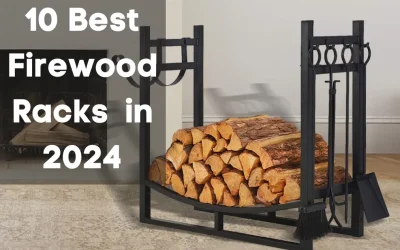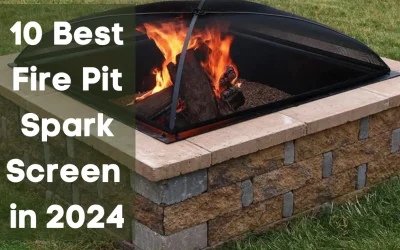In short, if you can get your hands on cheap or free wood easily and don’t mind the extra effort of cutting and drying it or cleaning the residue afterwards, wood can be a budget-friendly choice for fuelling your fire. But, if you live in a city or town and want a fuel that’s cleaner and easier to use, and fairly cheap to run, a smokeless fuel is probably the best option for you. In saying that, different woods and smokeless fuel types have different burning efficiencies. And the cost of a fuel type also depends on a few other factors like the burner/fire pit design, insulation, location, etc.
So in this article, I will compare the cost-effectiveness of using different woods and smokeless fuel types to help figure out the cheapest one for you.
Related : How Does A Perfect Smokeless Fire Pit Work?

Cost of Wood as a Heating Source
Wood has been a traditional source of heat for centuries. It’s readily available, renewable, and can provide a cozy ambiance that many people love. However, the cost of wood can vary greatly depending on your location, the type of wood and whether you choose to process it yourself or buy pre-cut logs.
If you live in an area with abundant forests, you may have access to cheap or even free wood, especially if you’re willing to cut and split it yourself. But, this can be labor-intensive and time-consuming. Also, remember that freshly cut wood needs to dry out, or season, for at least six months before it can be used as firewood.
If you opt for pre-cut, seasoned wood, prices can range anywhere from $150 to $350 per cord, depending on your location.
When we talk about wood, a “cord” is a way to measure how much firewood you have. It’s like a big stack of wood that’s all neatly arranged. A cord of wood is usually 4 feet high, 4 feet wide, and 8 feet long. So it’s a big pile that takes up a lot of space! People use cords to figure out how much firewood they have or how much they need to buy. It’s a handy way to know how much wood you’ll have for keeping warm and cozy!
A cord of wood can typically heat a well-insulated home for approximately a month in winter. Therefore, you’ll need to factor in how many cords you’ll require for the entire heating season.
Wood Burning Efficiency Comparison Chart
Fuel efficiency is generally measured by a term called the “Calorific value”. It basically means how much heat energy you can get from burning a fuel. It tells you how much heat you can get per amount of fuel you have. So, if a fuel has a high calorific value, it means it can give you a lot of heat when you burn it. It’s a way to compare different fuels and see which one can give you more heat. The higher the calorific value, the more heat you can get from the fuel.
| Wood Type | Calorific Value (BTU per cord)) |
|---|---|
| Oak | 28 million – 32 million BTU |
| Maple | 24 million – 28 million BTU |
| Pine | 15 million – 20 million BTU |
| Fir | 15 million – 20 million BTU |
| Seasoned Wood | 20 million – 24 million BTU |
Cost of Smokeless Fuel as a Heating Source
Smokeless fuels, like anthracite coal, coke, and manufactured smokeless briquettes, are popular alternatives to wood, especially in urban areas where smoke control regulations are in place. These fuels burn cleaner and hotter than wood, generating less smoke and particulates. And of course you have other smokeless fuel types like Propane, Natural Gas, Bioethanol, Gel Fuel and Denatured Alcohol.
The cost of smokeless fuel varies depending on the type and quantity you buy. On average, a 50-pound bag of anthracite coal can cost around $12 to $15, while a similar size bag of smokeless briquettes can cost about $20 to $25. Depending on your fireplace/stove’s efficiency and your home’s insulation, a 50-pound bag can last anywhere from a day to several days.
One significant advantage of smokeless fuels is their high heat output and longer burn times compared to wood. This means you’ll need less fuel to generate the same amount of heat, potentially saving you money in the long run. But, smokeless fuels tend to be more expensive up front, so if you’re looking for a lower-cost option in the short term, wood may be better.
Smokeless Fuel Burning Efficiency Comparison Table

Here is a comparison of the calorific values of different fuel type. Some wood-like, and others that are just great at heat production.
| Fuel Type | Calorific Value (BTU/lb) |
|---|---|
| Anthracite Coal | 24,000 – 28,000 |
| Coke | 13,000 – 15,000 |
| Smokeless Briquettes | 8,000 – 10,000 |
| Propane | 91,500 |
| Natural Gas | 103,000 |
| Bioethanol | 76,000 |
| Gel Fuel | 3,000-5,000 |
| Denatured Alcohol | 12,500-14,000 |
When you’re thinking about which fuel is cheaper to burn between wood and smokeless fuel, it’s not just about the upfront cost. You also want to consider how efficient each fuel is at producing heat. In simple terms, you want to know how much heat you get for each bit of fuel you burn.
Generally speaking, smokeless fuels are a real powerhouse when it comes to heat. They have a higher calorific value compared to wood, which means they release more heat for the same amount of fuel. They also burn slower and more consistently than wood, so you can enjoy longer-lasting fires without constantly adding more fuel.
Now, wood-burning stoves and fireplaces are a bit different. They may need more attention and fuelling compared to smokeless options. And if you’re not using properly seasoned wood, the efficiency can take a hit. But don’t worry! Modern wood-burning stoves are designed to be super efficient, especially when you use dry and seasoned wood. That can make a big difference in the heat output.
When it comes to emissions, smokeless fuels take the crown. They burn cleaner, producing little to no smoke and releasing fewer nasty particles into the air. This makes them a great choice for indoor use and helps keep the air fresher and healthier.

But hey, wood-burning stoves can also step up their game! You can upgrade them with fancy gadgets like catalytic converters and secondary combustion chambers to reduce emissions. Just keep in mind that these extras can cost you some extra bucks and require regular maintenance.
So, when you’re deciding on a fuel, consider efficiency, emissions, and your personal preferences. That way, you’ll find the perfect match for your cozy fires and keep things both warm and clean!
Environmental Considerations of Wood vs Smokeless Fuels

When thinking about heating options, we can’t forget about the environment. It’s not just about cost and efficiency.
Wood is pretty cool because it’s carbon-neutral. That means trees suck up carbon dioxide as they grow, and when we burn wood, that CO2 goes back into the air. As long as we get wood from sustainable sources, it’s a renewable and eco-friendly choice.
Smokeless fuels, though, are a bit different. They come from fossil fuels, which are non-renewable. While they’re cleaner than old-school coal, they still give off greenhouse gases. However, in busy cities, they can be a better choice for air quality.
Remember, the environmental impact goes beyond just burning the fuel. With wood, you need to make sure it’s responsibly sourced and burned efficiently. And if you go for smokeless fuels, be aware of how they might affect the air around you.
No matter what you choose, take care of your heating system. Regular maintenance keeps it running efficiently and reduces emissions. And always make sure there’s good ventilation when using wood or smokeless fuels
Let’s keep our homes warm and cozy without messing up the planet!
Conclusion: Which is Cheaper – Wood or Smokeless Fuel?
Determining whether wood or smokeless fuel is cheaper depends on several factors, including not just the purchasing cost but, availability of fuel in your area, the efficiency of your heating appliance, and your home’s insulation.
Wood can be a cost-effective option if you have easy access to cheap or free wood and don’t mind the extra work of cleaning up afterwards, cutting and seasoning it. However, a smokeless fuel like Natural Gas or Propane might be worth the extra cost if you live in an urban area and prefer a cleaner, low-maintenance fuel.
Remember, the cheapest option isn’t always the best one. Consider your lifestyle, preferences, and the environmental impact of your choice. Whichever you choose, ensure your heating appliance is well-maintained and used safely to get the most out of your fuel and keep your home warm and cozy.








